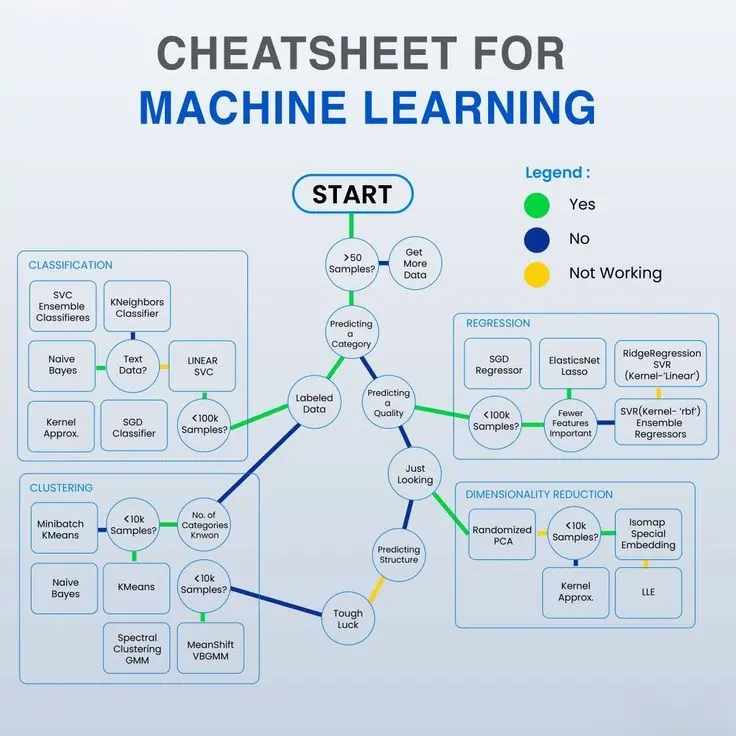Welcome to the world where data isn't just data; it's the gold that powers the future! As a data scientist, navigating through the myriad of machine learning algorithms can feel like choosing the right tool from an endless toolbox.
Fear not! This blog post is your treasure map, guiding you through the jungle of ML algorithms with clarity and fun.
The Magic of Machine Learning
Machine learning (ML) is like teaching a computer to learn from experience. Imagine your computer as a curious child, learning to identify patterns, make decisions, and even predict the future based on the data it's fed. Each algorithm has its own personality, strengths, and quirks. Here's how we can categorize them for clarity:

1. Supervised Learning: The Mentor Approach
In supervised learning, we're like the wise mentors, guiding our models with labeled data. Here's how you can choose:
- Linear Regression: Think of this as drawing a straight line through your data points to predict house prices based on square footage. Simple but effective for continuous outcomes.
- Logistic Regression: This one's for binary decisions, like determining if an email is spam or not. It uses a sigmoid function to give you probabilities.
2. Unsupervised Learning: The Explorer's Path
Unsupervised learning is like sending your model on an adventure to find hidden treasures (patterns) in data without any labels.
- K-Means Clustering: Picture this as grouping similar fruits at a market. It's great for segmenting customers into different buying behaviors.
- Principal Component Analysis (PCA): Imagine reducing a complex painting into its basic brush strokes. PCA helps in reducing dimensions while keeping the essence of your data intact.
3. Reinforcement Learning: The Game Player
Here, the model learns by playing a game, where actions lead to rewards or penalties. It's like training a pet with treats.
- Q-Learning: This is akin to teaching a dog to fetch. Over time, it learns which actions (like fetching the right object) lead to the best rewards.
Making Choices: A Decision-Making Flowchart
When faced with a problem, how do you know which algorithm to pick? Here's a fun flowchart approach:
- Do you have labeled data? If yes, you're in supervised territory. If no, welcome to unsupervised learning.
- Is your problem about predicting a value or classifying? This directs you towards regression or classification algorithms.
- What's the nature of your data? Text? Images? This influences your choice, like choosing Logistic Regression for text classification or Convolutional Neural Networks for image recognition.
Real-World Applications and Examples
Let's bring these algorithms to life with some real-world examples:
- Predicting House Prices: Use Linear Regression. Imagine predicting the price of a dream home just by knowing its size!
- Email Spam Detection: Logistic Regression comes to play here, filtering out those pesky spam emails before they clutter your inbox.
- Customer Segmentation: K-Means Clustering can group your customers by their shopping habits, helping tailor marketing strategies.
- Dimensionality Reduction in Genomics: PCA can simplify complex genetic data, making analysis feasible and insightful.
Conclusion: Your ML Journey Begins
Diving into machine learning doesn't have to be daunting. With this cheat sheet, you're equipped to start your journey, making informed choices about which algorithm to use. Remember, the key is to experiment, learn, and adapt.
Comparison Table: ML Algorithm Cheat Sheet
Now, armed with this knowledge, go forth and conquer the data science world! If you need more complex ML/AI services, remember you can hire us. Share your thoughts or experiences in the comments below, or tag someone who might find this guide useful!
Your Ultimate Guide to Machine Learning Algorithms: A Data Scientist's Cheat Sheet